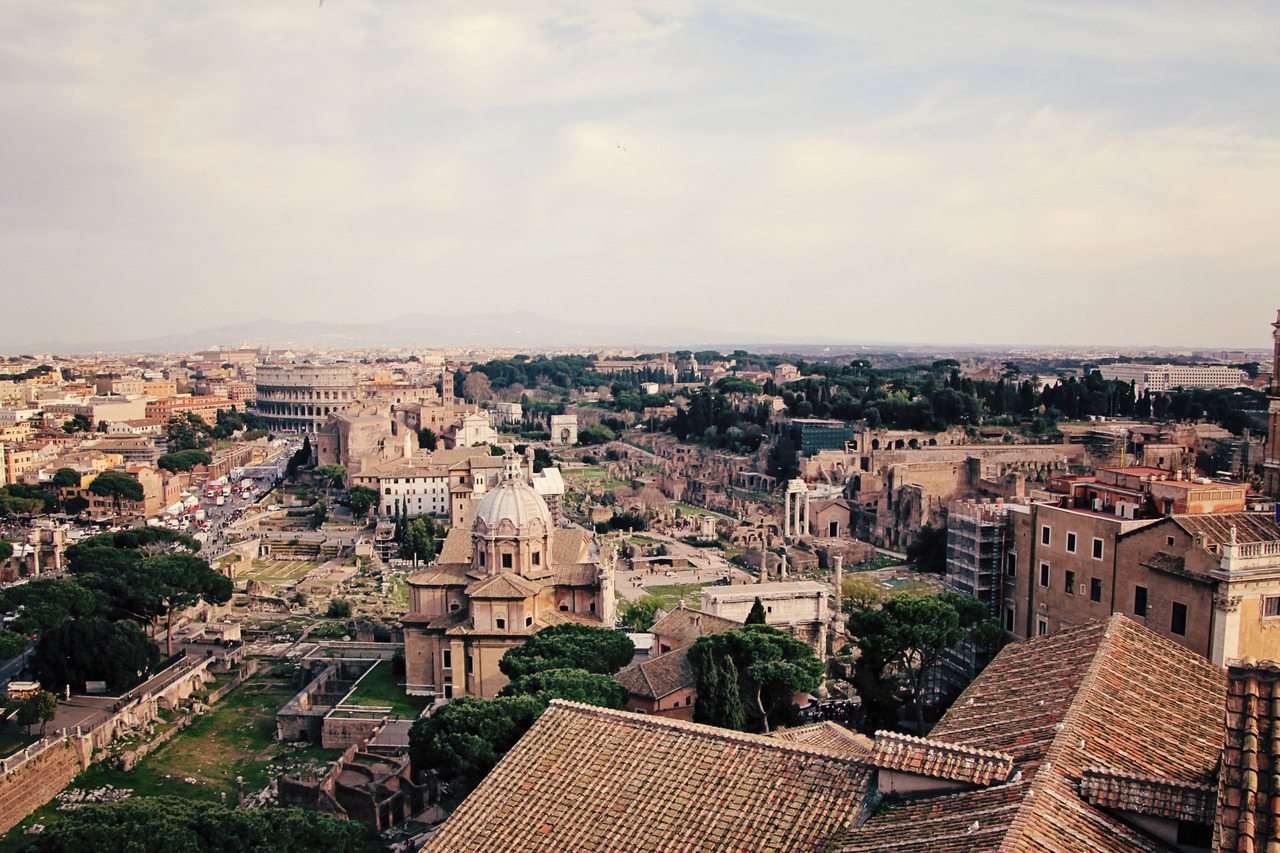I love the gorgeous architectural details in stone and in fountains and statues lining the entrance of the Galleria Borghese. Remnants of the past play out as well in ancienne statue fragments and the fountains outside the museum’s grand entrance. The walk to the Galleria Borghese always has that lazy Sunday feeling, surrounded by Roman families and visitors enjoying the greenery and fresh air. Young and old lovers can be spied kissing under a tree or lying on a picnic blanket enjoying the sunshine and the sounds of songbirds above them.
There are homages to temples, gods and goddesses, Greek Tragedies and Comedies, and to Rome’s storied past in the “Romantic era ruins” among the pleasure walks and dreamy Umbrella pines. As you approach the museum you feel you are in for something really special… and are not disappointed in the great architectural reveal.
More architectural details by Flaminio Ponzi and Scipione Borghese create a feast for the eyes, before entering the villa with a ticket… for the Roman antiquities and Renaissance and Baroque masterpieces, … in room after sumptuously decorated room.
Tickets are recommended bought IN ADVANCE, online or at the ticket office down the stairs. To enter the museum, proceed up the stone stairs to the stunning Classical Antiquity portico where they will take your ticket.
You don’t want to miss this experience!
After an afternoon stroll and a few hours in the museum, head to the Pincio at the Golden Hour (an hour before dusk) and watch the sun set over the cupolas and ruins and houses behind the glittering Piazza del Popolo.
The golden and orange light eventually turns a deep violet, and there is an enchanting glow about Rome at its most magnificent! It is a heady, Romantic vision, and every one seems to be under a collective spell of beauty and the feeling of immortality in Éros in the Eternal City.
This is one of the best, most beautiful, and unforgettable days you could spend in Rome. It could be the most romantic Valentine’s Day of your lives. Rome seen and felt like this is truly writ on the heart for an eternity.
You can eat at the romantic nearby Casina Valadier for sweeping sunset views and aperitivos or an early dinner – they have a Valentine’s Day prix fixe menu for lovebirds.
Looking for something quicker? Walk a short distance to the late Renaissance church of the Santissima Trinità dei Monti, (French: La Trinité-des-Monts).
Pop into the sanctity and quiet beauty of the French Roman Catholic church and you may luck out with a choir of nuns singing en français classical songs of devotion while you peer at lush murals, sculptures, paintings, and the altar.
Light a candle together and head down the famed Spanish Steps just outside and whisper a snippet of a Keats ode into your beloved’s ear outside of the Keats Shelley (Byron) House Museum (worth a visit if you’re there earlier when it is open!).
Stop for a late tea at Babington’s and try their Rome in Love Tea inspired by the Paolina Borghese sculpture and Female Beauty at the Borghese, or enjoy some cocktails or champagne and light fare – offered in the luxurious comfort of their 125 year old tea room. It’s a cute British afternoon tea room with Italian flare.
Looking for something sexier? Cross the avenue and stop in at the nearby Romantics’ saucy hangout, the Antico Caffè Greco, decorated in 18th century red satin and marble decor, for drinks and desserts.
Don’t skip a look and a ponder in the beautiful Santissima Trinità dei Monti French Church, at the top of the Spanish Steps from the Via Condotti.
Gregory Peck’s apartment in Roman Holiday where he brings Audrey Hepburn in the film is found in the romantic and quiet street of Via Margutta.
If you’re still in the mood for a short early evening walk hand in hand past the glamorous shops and passersby, head to the most romantic street in Rome, the charmingly low-lit, ivy covered boutiques and artisan art shops, boutique hotels, and restaurants, Via Margutta (made famous by Audrey Hepburn and Gregory Peck in Roman Holiday!) I love the vegetarian restaurant created by film director Federico Fellini, Il Margutta! They have many vegetable creations, handmade pasta and smoked cheeses, and a vegan and gluten free menu, with exceptional organic wines, mocktails, and delicious desserts, including house made gelato.
GALLERIA BORGHESE (english site)
https://galleriaborghese.beniculturali.it/en/visita/
Via del Collegio
Romano, 27
00186 Roma, Italia
tel. 39 06 67231
www.beniculturali.it
Antico Caffè Greco http://caffegreco.shop/index.php
Via dei Condotti, 86, 00187 Roma RM, Italy
Babington’s Tea Room https://www.babingtons.com/en
Piazza di Spagna, 23, 00187 Roma RM, Italy
Casino Valadier Restaurant https://casinavaladier.it/
La Grande Cucina S.p.A.
Piazza Bucarest, Villa Borghese
00187 Roma
P. I.V.A. 05901701002
Tel (+39) 06 69922090
Fax (+39) 06 6791280
info@casinavaladier.it
Il Margutta vegetarian food & art https://ilmargutta.bio/
Via Margutta, 118 – 00187 – Roma
Per informazioni e prenotazioni:
info@ilmargutta.bio
Tel : +39 06. 32650577
Fax : +39 06. 3218457

















































